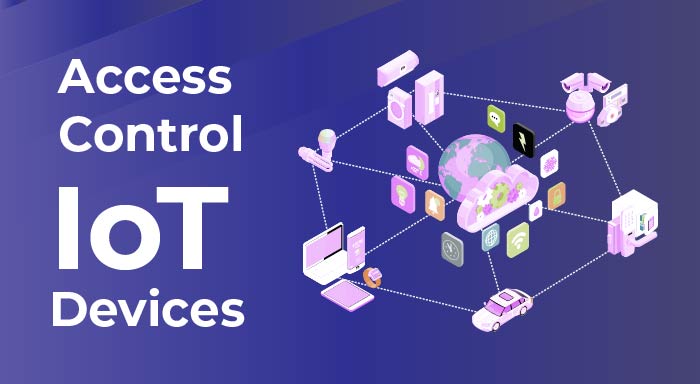In the current interconnected world, WSN and IoT technologies have silently transformed how we interact with our environment. These two dominant technologies redefine intelligent environments all around us. Wireless Sensor Networks (WAN) provide a distributed network connected with a large number of sensor nodes. On the other hand, the Internet of Things (IoT) is a global network that connects smart objects to the Internet. These dominant technologies are used to collect, transmit, and exchange within an interconnected network.
For WSN in IoT, it plays a pivotal role that provides a wireless infrastructure connecting IoT sensor nodes to a central gateway. WSN technology acts as a data repository of the IoT, which provides new ways to analyse vast amounts of data and provides real-time data insights. These technologies together transform various industries, from healthcare and industrial automation to agriculture and home automation.
In this blog we will decipher what Wireless Sensor Networks (WSNs) are and how they integrate with IoT to redefine automation. Additionally, you will learn about the workings, benefits, and challenges of WSN in IoT. Before going deep into the world of WSN in IoT, it is essential to understand IoT and WSN first.
What is IoT (Internet of Things)?
IoT is a network ecosystem where physical devices and sensors together act as a real-time data messenger to foster intelligent infrastructure. This enables embedded devices to collect, process, and exchange information with each other in a network. With IoT sensors and strong internet connectivity, these IoT devices communicate with each other without human intervention. From smart alarm clocks in home automation to smart irrigation systems, IoT ensures smart functionality, automation, and enhanced decision-making.
Example of IoT systems:
- Healthcare monitoring system
- Industrial IoT automation
- Home and office automation
Every IoT device runs on data, but where does this real-time information come from? This is because wireless sensor networks are embedded with various sensor nodes. This system senses and gathers data from surrounding real-world activities like pressure, motion, heat and sound.
What is WSN (Wireless Sensor Network)?
Think of it like building a model with LEGO blocks where each block serves a purpose. When all these blocks are connected structurally, they result in something greater than the sum of their parts. Wireless sensor networks, or WSNs, function similarly. At its core, WSN contains various dimensionally distributed sensor nodes that monitor real-time environment conditions such as humidity, motion, and temperature. While these systems are not functioning standalone, they communicate with other nodes to collect, process, and transmit data. This data is transmitted to central servers and cloud platforms wirelessly for further processing.
How does WSN in IoT work? The architecture of IoT-enabled WSN systems consists of several layers. Let’s break down the different layers of WSN in IoT systems:
- A sensor unit for detecting environmental metrics
- A processing unit for basic data analysis and processing
- A wireless communication module like ZigBee, LoRaWAN, or BLE.
- A power unit used as power resource
These autonomous units are responsible for data collection, processing, and transmission via communication protocols in the IoT ecosystem. Primarily, these units act as a bridge that provides crucial data from digital to physical IoT platforms, enabling intelligent functionality.
WSN in IoT Systems: The Perfect Convergence
When WSN meets with IoT, it creates an advanced wireless network equipped with various isolated devices. This WSN and IoT integration provides a real-time, responsive system that provides instant access to actionable data insights on a global scale. IoT offers a framework which connects sensor networks to the internet for making the data accessible to their devices. This convergence streamlines the data flaw by transforming the isolated device operations into an interconnected ecosystem. The WSN integration with IoT makes it an easy-to-use and scalable communication platform that easily fits with countless industries. This enhances various IoT connectivity solutions:
- Predictive maintenance using IoT
- IoT remote control and monitoring
- Context-aware services
- Automated alerts and notifications
WSN in IoT ensures precise, actionable and real-time data is delivered to every layer of IoT system. Irrespective, it is urban air quality monitoring systems, home security systems, or smart Heathcare system.
The Advantages of WSN in IoT
Besides the individual benefits of WSN and IoT, its synergy comes with some additional benefits. Let’s shed the light on some core benefits:
- Energy Efficiency: Modern WSN systems are designed to operate on a compact and low power grid. However, some sensor nodes can run for months or years on a single battery. These lower-energy systems enable developers to easily install them in remote locations and wide area networks with limited power sources.
- Scalability: The IoT-enabled WSN systems are flexible and easily adaptable if you need to monitor a larger area like smart cities. By accommodating a few additional sensor nodes, the system can adjust itself to changing requirements and increasing workload. Additionally, the system can grow organically as the operations expand without hindering performance, making it perfect for large-scale IoT networks.
- Real-time Monitoring and Response: The integration of WSN in IoT systems allows real-time data collection from the real-world environment. The immediate response rate and awareness allow the systems to get instant notifications when metrics fall outside the acceptable range. Whether it is security camera surveillance or detecting a water leak, the system significantly reduces risks and improves decision-making.
- Cost-Effective: Unlike traditional systems, wireless sensor communication requires initial investments and fewer physical installations. With predictive maintenance, the systems reduce the 70% likelihood of system failure, leading to fundamental cost savings in reinstallation and maintenance.
Challenges and Limitations of WSN in IoT
Despite their distinct potential, WSN in IoT systems typically comes with some challenges. Here are some of the common:
Security Risks: Each sensor in wireless IoT communication emphasises the entry point for cyberattacks to access the systems. Implementing strong encryption and secure IoT protocols is crucial to prevent the system from potential vulnerabilities.
Data management Issue: For efficient data acquisition, processing, and transmission, a robust analysis of large amounts of data is essential. For this purpose, an effective data management strategy and analytic capabilities are required to ensure no data loss.
Standardization Issue: The advanced industries are working on standardization, but the WSN in IoT is not there yet, creating interoperability issues. Multiple communication protocols, devices, and data formats are competing in the WSN ecosystem.
Conclusion:
Wireless sensor networks in IoT integration have become one of the most significant advancements in the current technologically advanced world. Beyond just a simple technical integration, it is the foundation of intelligent automation and functionality. WSN in IoT offers a reliable and cost-effective solution for collecting, processing, and transmitting data from wireless environments. By integrating smart sensor nodes for real-time decisions, WSN redefines how we interact with the world, making it more efficient and convenient.
As technology continues to evolve, it is expected that sensors will become smarter, networks more reliable, and the applications more sophisticated. For businesses, governments, and engineers who want to scale with IoT, understanding and embracing WSN-based solutions will be a game changer. In the coming years, WSN in IoT will not have an option--they will become a necessity for your business success.



